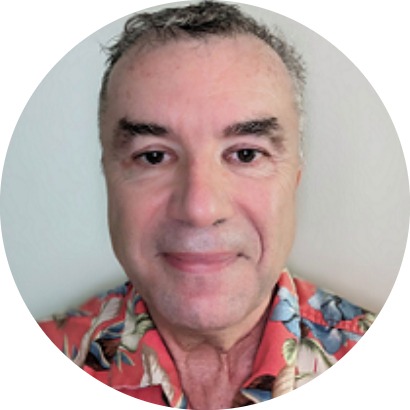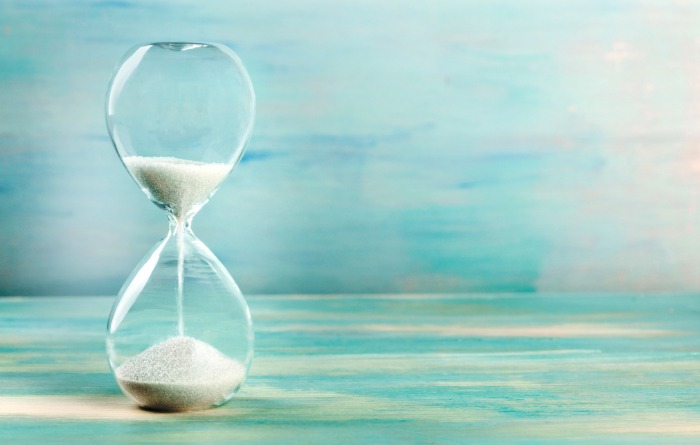I am Mark Dolan and I have completed Common Earth Modules 1 and 2. The program has hooked me. What I do with the knowledge is where I am now stuck. I wrote before I did Common Earth but the content has changed my perspective somewhat. The discussion in Module 2 about exponential growth affected me – particularly the folding paper discussion. If you like this essay, my Newsletter is here. I write weekly and it is free. I have written several essays that relate to the climate here including this one which was titled 6 ms (short for millisecond).
I spent a portion of my career working with high-speed measurement equipment. Today is an examination of how much time we have left to focus our efforts to deal with human-caused change in our environment. How could humans impact the whole world over such a short period? I think for many, we revert to our world just changing like the weather from day to day. How recent and profound is human impact?
Many of the things we care about in our world happen over millennia. In our natural world, many things are happening quicker (blink of an eye ~ 300 ms, a honeybee flaps its wings ~ 5 ms).
A Day in the Life
Earth formed around 4.6B years ago and primitive life arrived around 3.8B years ago. Around 2.4B years ago, photosynthesis emerges as a way to change CO2 into oxygen powered only by the light of the sun. Let’s imagine we have a clock and we assign photosynthesis as midnight. During this one magical day, we will examine history and arrive at today. I hope it will be sensible for the uncertain to see why the human impact on the planet is enormous and recent.
An Action-Packed Day
-
At midnight (2.4B years ago) broader life becomes possible because of photosynthesis. Plants thrive because there is a lot of CO2 to eat and oxygen is made in the process.
-
An atmosphere will have to wait. The bottom of the ocean has a lot of iron in it. Iron loves oxygen and feasts for about 1B years. It is now 9 AM (1.5B years ago).
-
After the iron has been satisfied, the oxygen accumulates in the atmosphere. Animals need a lot of oxygen. At 05:00 PM (700M years ago) the first animals appear.
-
A stable atmosphere means oxygen fills the oceans. At 06:42 PM (530M years ago) the first fish appear!
-
At 7:33 PM (445M years ago) we have our first known mass extinction. There have been 5 that we know about. Extinctions arrive without warning. The environment just reaches a tipping point.
-
By 08:00 PM (400M years ago) the first four-legged animals appear!
-
At 11:20 PM (60M years ago) an asteroid arrives and the dinosaurs are gone in mass extinction #5.
-
At 11:54 PM (10M years ago) mammals appear
-
At 11:59:51 PM (300K years ago) an upright walking ape arrives. It is 9 seconds to midnight. We are newcomers.
-
At 11:59:59.856 (4000 years ago) the ape invents alphabets. Storytelling continues in earnest. It is 144 ms to midnight — 30 flaps for a honeybee.
-
At 11:59:59.994 (175 years ago) humans start burning everything they can. It has figured out how to do practical work without creating more humans or domesticating more animals. We began disrupting the environment IN EARNEST 0.006 seconds before midnight.
-
At 11:59:59.996, (100 years ago), after growing its population, humanity starts making nitrogen fertilizer to feed everyone. Next, we begin making stuff from everything we burn — we call it plastic.
In this thought experiment, a millisecond is about 25 years. When scientists say things could get bad by 2050 (25 years), we are almost there. The next time someone tells you humans can’t disrupt the planet think of how little time we’ve been trying.
The Human Tendency (THT)
We are the greatest thing that ever emerged on this planet and the most dangerous. We have wrested control of the development of life on the planet from the planet. We introduce change at speeds mutation-driven evolution is not built for. We’ve been subverting nature on a grand scale for about 175 years and in the last 50 years have come to realize the consequences. The 25 years ahead, less than a human lifetime, will be critical. We can effect change beyond nature’s adaptation. Human tendencies come into focus as genuine risk. We are our most significant risk and best hope. Each of these human tendencies are qualities of our thought. They are generally things to GUARD AGAINST.
-
Wait for a crisis (let’s meet at 11:45 PM to extend the debt limit)
-
Corruption (let’s market clean coal)
-
Bribes (Camels are the favorite cigarettes of Doctors)
-
Listen to ‘both sides’ even when one side is delusional (that little needle is injecting a microchip into your body to control you)
-
Out of sight, out of mind (I’ve never seen a single fishing boat in my life [amongst the 3.5M] — there will always be enough salmon to eat)
-
Ignore reality (Biden and Trump aren’t THAT old, they both seem to be sharp and stable)
-
Procrastination (Class starts in 15 minutes, I better get out of bed)
-
Groupthink (Lots of NASA Engineers knew of the failure patterns of O-Rings in the cold before the Challenger launch —speaking up is hard)
What Can We Do About It?
All of these tendencies are features of our consciousness. Each of them can block sensibility. We should be cautious and likely reject any “leaders” who embrace these tendencies.
So What Are The Facts
Changing the direction of these trends must occur with our help OR nature, when overwhelmed will reset the clock. There have been 5 mass extinctions in the last 440 million years. We are the first and only stewards this planet has ever had. We have, within our power, the means to change. We will likely get to a 1.5C temperature increase in 3-4 years. Lots of people pretending we will prevent it by 2050. None of us know how much is too much. What we do know is that some amount is too much and we are racing ahead faster than any time in human history. We are special. We have it within ourselves to change our path. The previous mass extinctions were all natural events. Something happens that is a tipping point. When the tipping point arrives, we have reached the top of the first hill of the rollercoaster. Only gravity will bring it to a stop.


